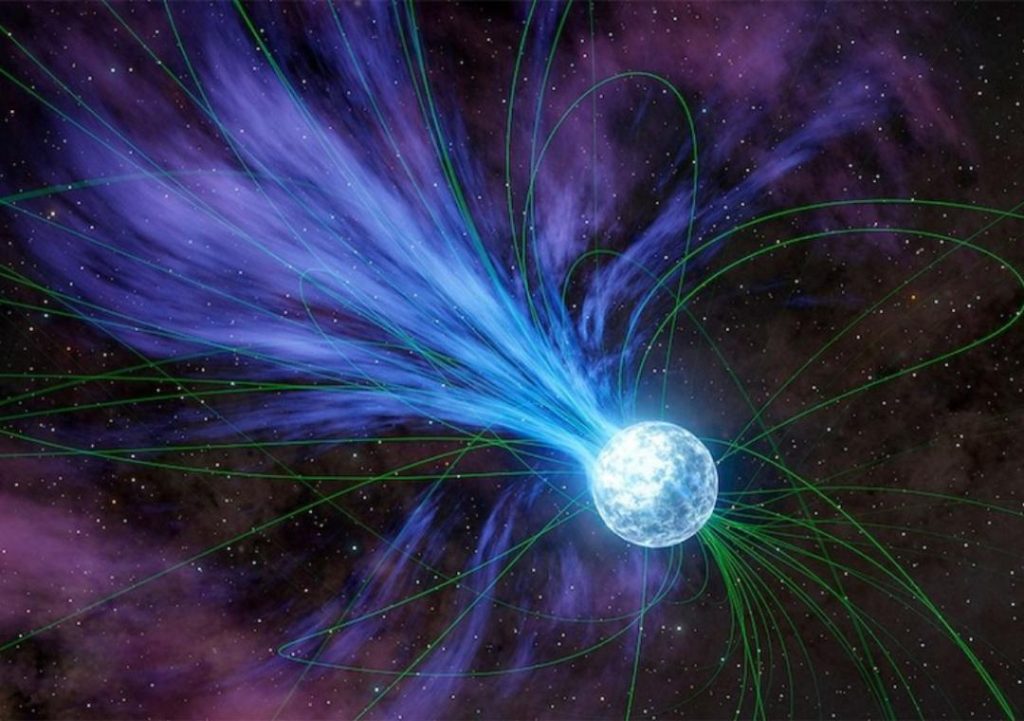
Gold & Platinum created through neutron stars’ explosions: Study
For centuries, humans have been fascinated by the origins of precious metals like gold and platinum. Scientists have long been searching for answers, and recent research has shed light on the mysterious process. According to a study led by Columbia University student Anirudh Patel, magnetars or highly magnetized neutron stars played a crucial role in creating these elements in a cosmic event over 20 years ago.
Magnetars are an extremely rare type of neutron star, which is a dense, spinning star that is formed when a massive star collapses in on itself. These stars are incredibly powerful and emit intense radiation, including powerful flares that are capable of releasing large amounts of energy into space.
The study suggests that these flares, which happen approximately once per decade in the Milky Way galaxy and annually across the observable universe, are responsible for the creation of elements like gold and platinum. These elements are formed when the intense radiation and energy released by the magnetars collides with other elements in the vicinity, causing them to combine and form new, heavier elements.
The research, which was published in the journal Nature, provides a groundbreaking new understanding of the origins of precious metals. For centuries, scientists have been searching for answers about the origins of these elements, and this study offers a new and exciting explanation.
The study’s findings are based on observations of a magnetar that exploded in 1998. The explosion was detected by NASA’s Compton Gamma Ray Observatory, which was launched in 1991 and operated until its decommissioning in 2000. The observatory was equipped with a variety of instruments that were designed to detect and study high-energy radiation, including the Fermi Gamma-Ray Space Telescope and the High-Energy Gamma-Ray Astronomy (HEGRA) telescope.
The researchers used data from these instruments to study the explosion and analyze the radiation that was released. They found that the radiation was composed of a variety of elements, including gold and platinum, which are highly unlikely to be formed through conventional astrophysical processes.
The study’s lead author, Anirudh Patel, explained that the discovery was a major surprise. “We were expecting to see some heavy elements, but we didn’t expect to see gold and platinum,” he said. “It’s a huge surprise, and it’s a big deal for our understanding of the origins of these elements.”
The research has significant implications for our understanding of the universe and the origins of the elements that make up the Earth. For centuries, scientists have believed that the elements were created through a process known as Big Bang nucleosynthesis, which occurred in the first few minutes after the universe began. However, this process was only capable of creating light elements, such as hydrogen and helium, and heavier elements were thought to be formed through more complex processes.
The discovery of gold and platinum in the magnetar’s radiation suggests that these elements may have been created through a different process, one that involves the interaction of intense radiation and energy with other elements in the universe. This process, known as rapid neutron capture or r-process nucleosynthesis, is thought to occur in extreme environments, such as the explosions of massive stars.
The study’s findings are not only important for our understanding of the universe, but they also have significant implications for the search for extraterrestrial life. The discovery of gold and platinum in the magnetar’s radiation suggests that these elements may be more common in the universe than previously thought, and this could have significant implications for the search for life beyond Earth.
In conclusion, the study led by Anirudh Patel provides a groundbreaking new understanding of the origins of precious metals like gold and platinum. The discovery of these elements in the radiation released by a magnetar’s explosion suggests that they were created through a process known as r-process nucleosynthesis, which occurs in extreme environments in the universe. This research has significant implications for our understanding of the universe and the origins of the elements that make up the Earth, and it could have significant implications for the search for extraterrestrial life.






